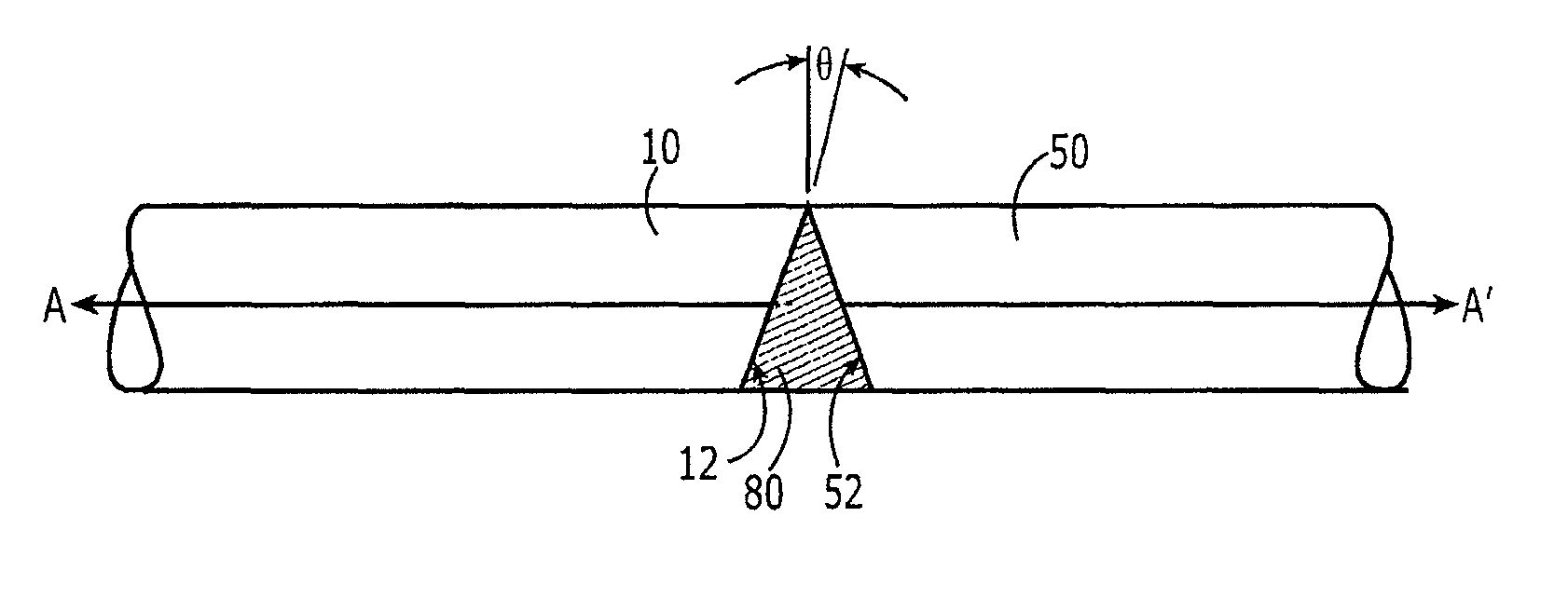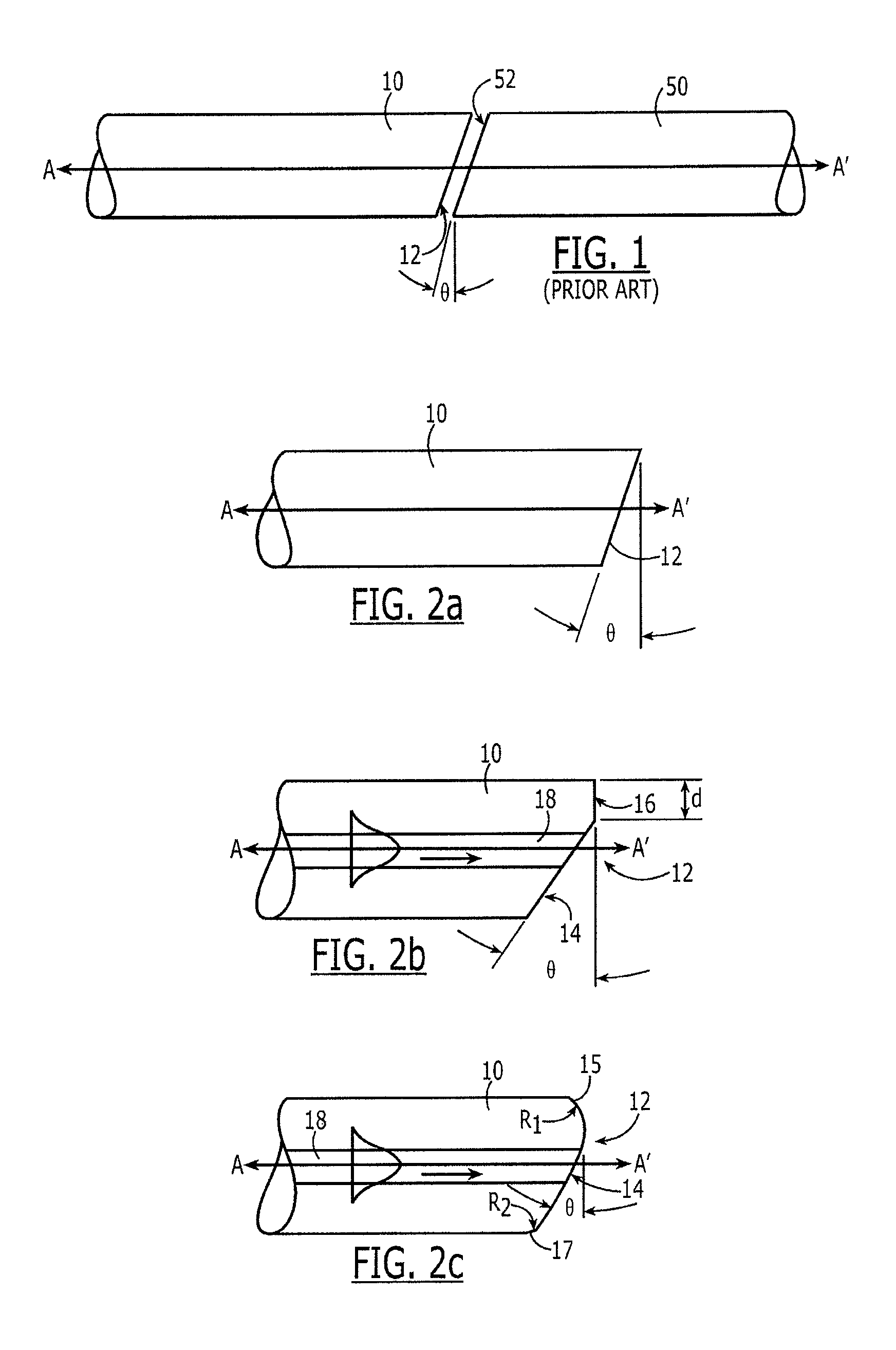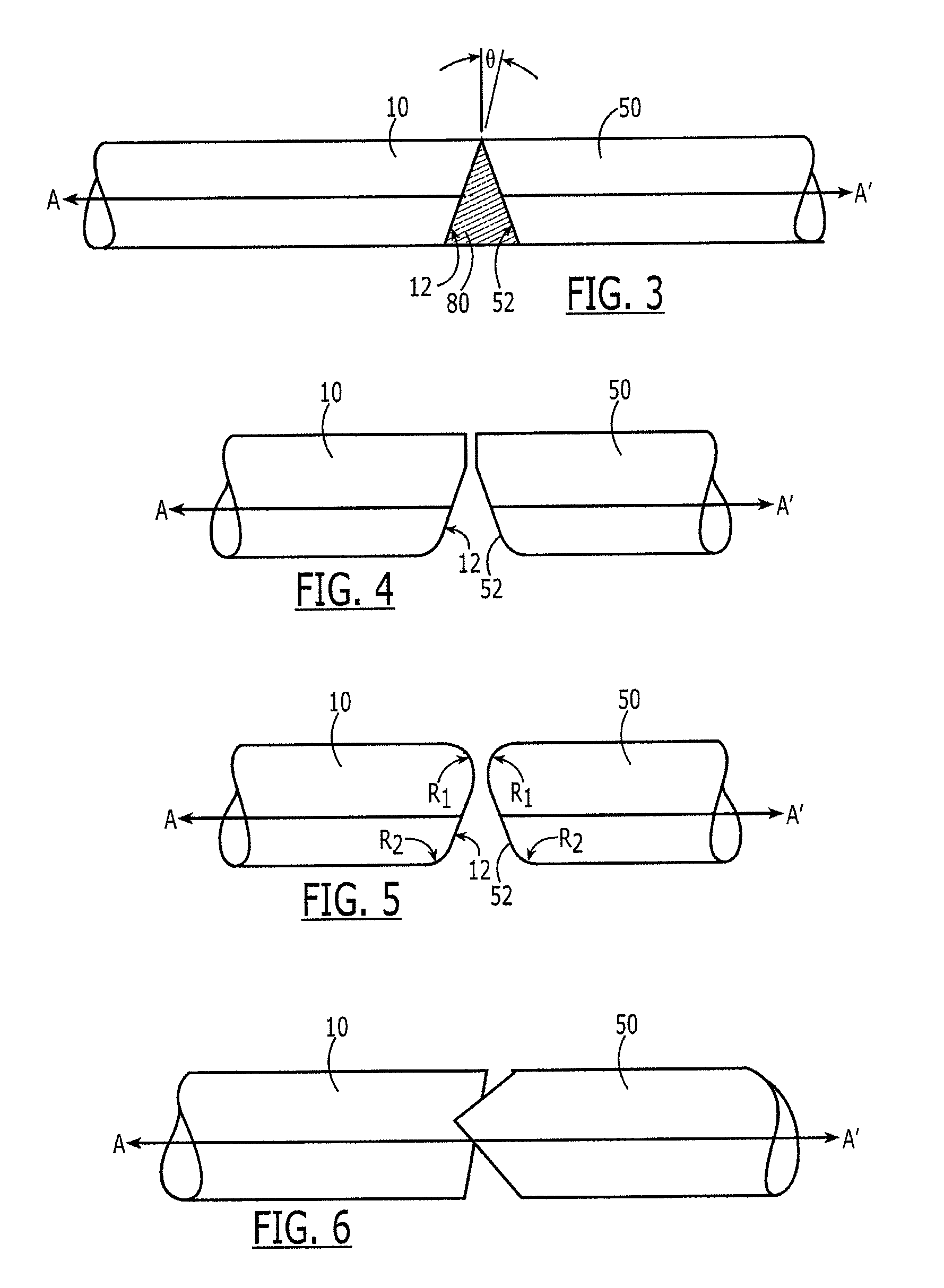Mating of optical fibers having angled end faces
a technology of mating fibers and end faces, which is applied in the field of mating fibers prepared to have angled end faces, can solve the problems of reducing the service life of the connection, increasing the reflectance at the splice, and deteriorating the optical signal, and achieves the effect of satisfying the optical connection
- Summary
- Abstract
- Description
- Claims
- Application Information
AI Technical Summary
Benefits of technology
Problems solved by technology
Method used
Image
Examples
Embodiment Construction
[0026]Referring again to FIG. 1, exemplary optical fibers are shown in diagrammatic side view. This arrangement is typical of the prior art in that both the launch and receive fibers 10, 50, have similarly-formed, referred to herein as “matched” or “matching,” angle-cleaved end faces 12, 52. In the example shown, these end faces 12, 52 are substantially flat, as is typical, for example, of a mechanically cleaved fiber, as well known in the art. Further, these end faces are “angle-cleaved,” or “angled.” As used herein, the terms “angle-cleaved” and “angled” refer to an end face that has a substantially-planar portion that is formed at an acute angle θ relative to a plane normal to the optical axis of the fiber, as shown in FIG. 1.
[0027]Further, the exemplary fibers 10, 50 of FIG. 1 are shown arranged in a typical prior art arrangement for satisfactory optical coupling in that they are positioned in conventional rotational alignment. As user herein “rotational alignment” and “rotation...
PUM
| Property | Measurement | Unit |
|---|---|---|
| angular rotation | aaaaa | aaaaa |
| angular rotation | aaaaa | aaaaa |
| of rotation | aaaaa | aaaaa |
Abstract
Description
Claims
Application Information
 Login to View More
Login to View More - R&D
- Intellectual Property
- Life Sciences
- Materials
- Tech Scout
- Unparalleled Data Quality
- Higher Quality Content
- 60% Fewer Hallucinations
Browse by: Latest US Patents, China's latest patents, Technical Efficacy Thesaurus, Application Domain, Technology Topic, Popular Technical Reports.
© 2025 PatSnap. All rights reserved.Legal|Privacy policy|Modern Slavery Act Transparency Statement|Sitemap|About US| Contact US: help@patsnap.com



